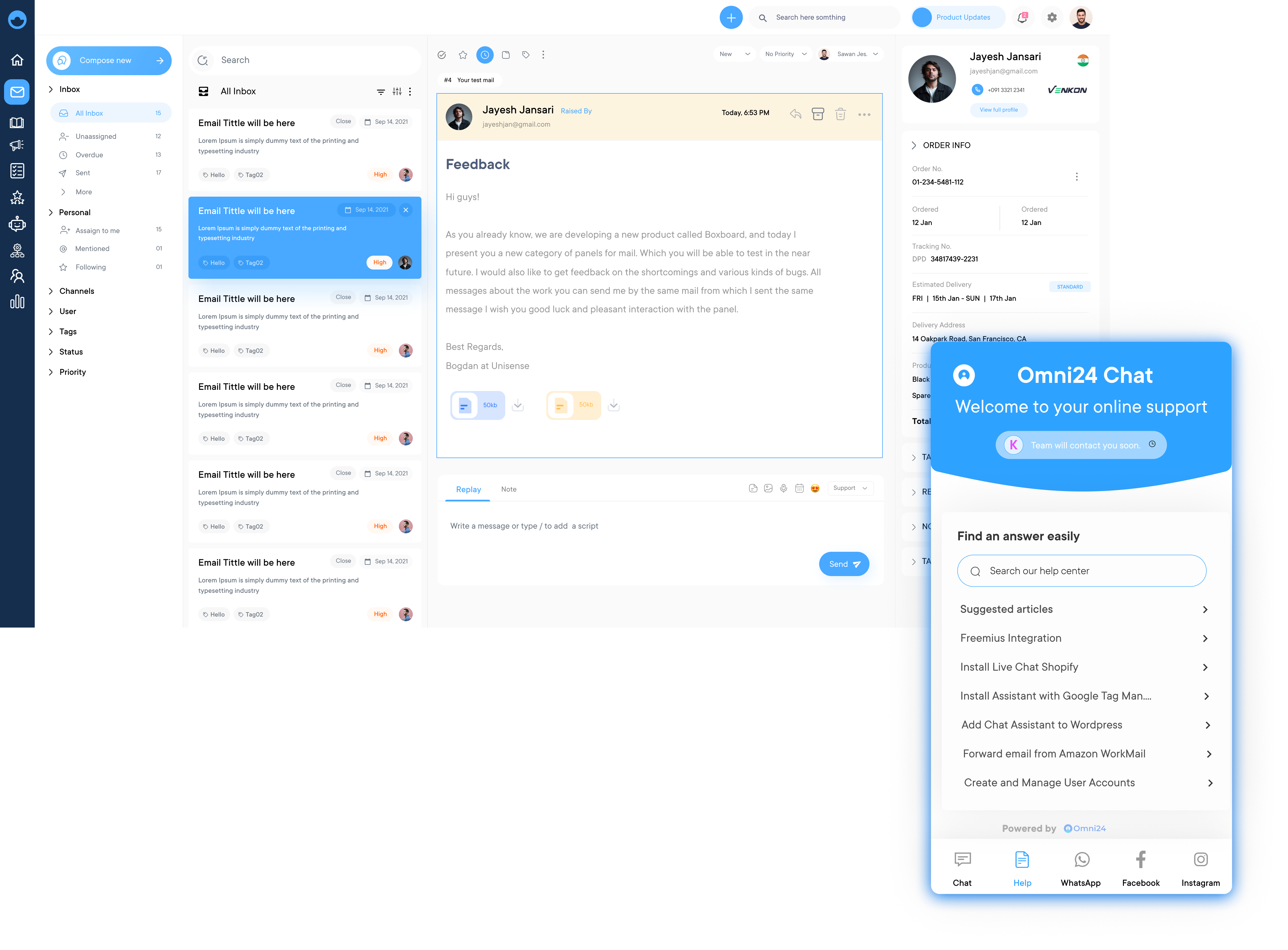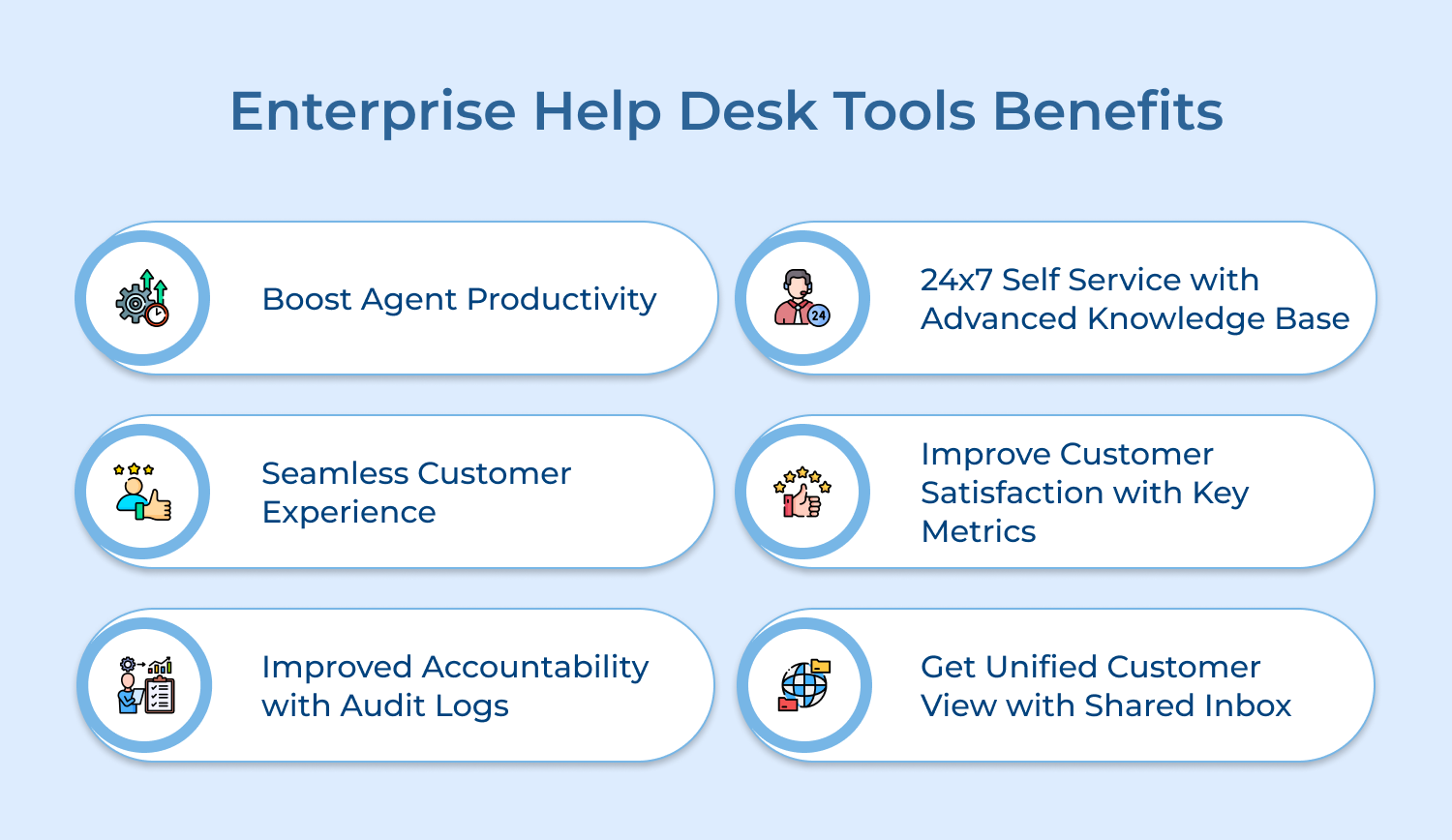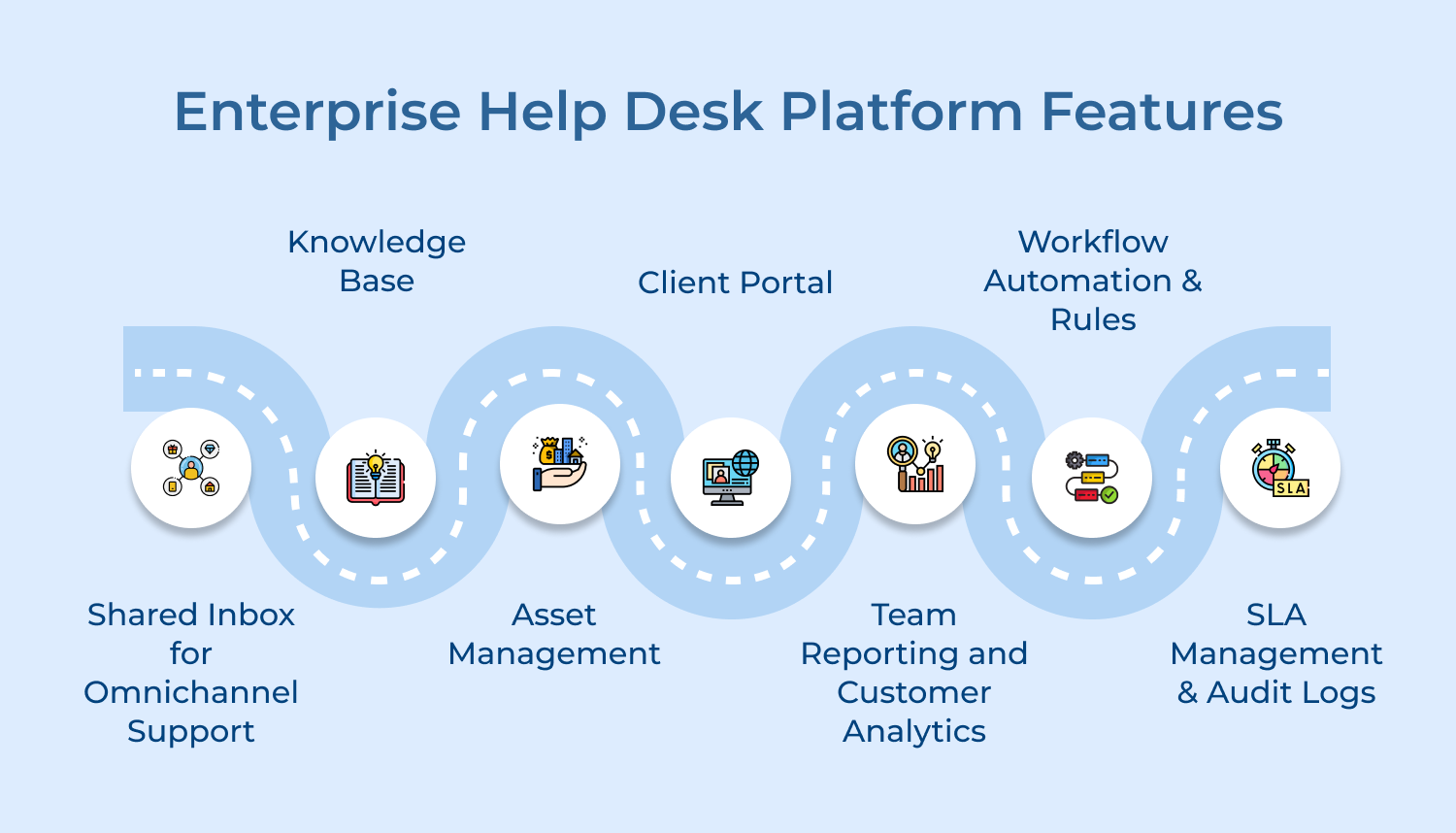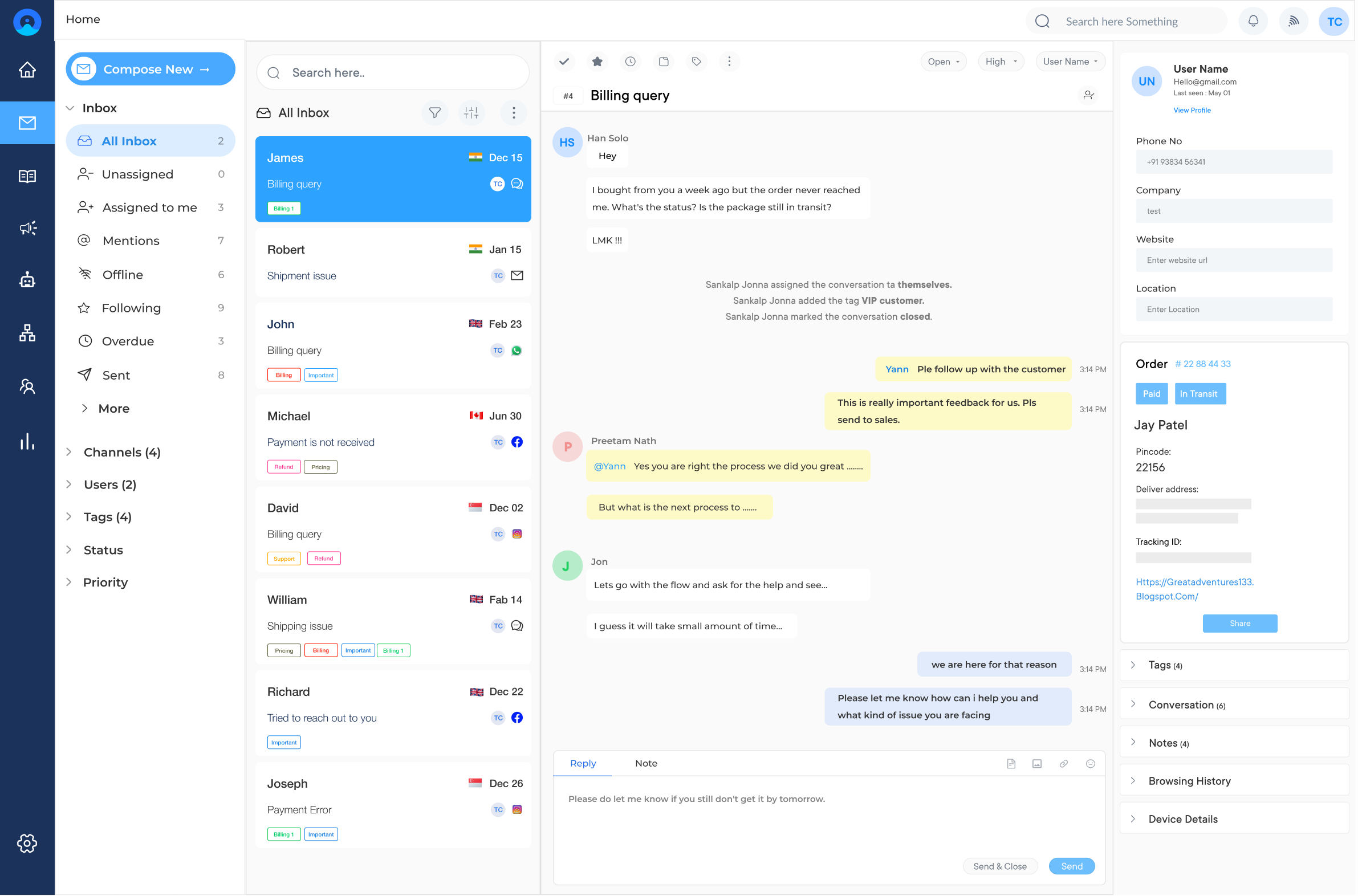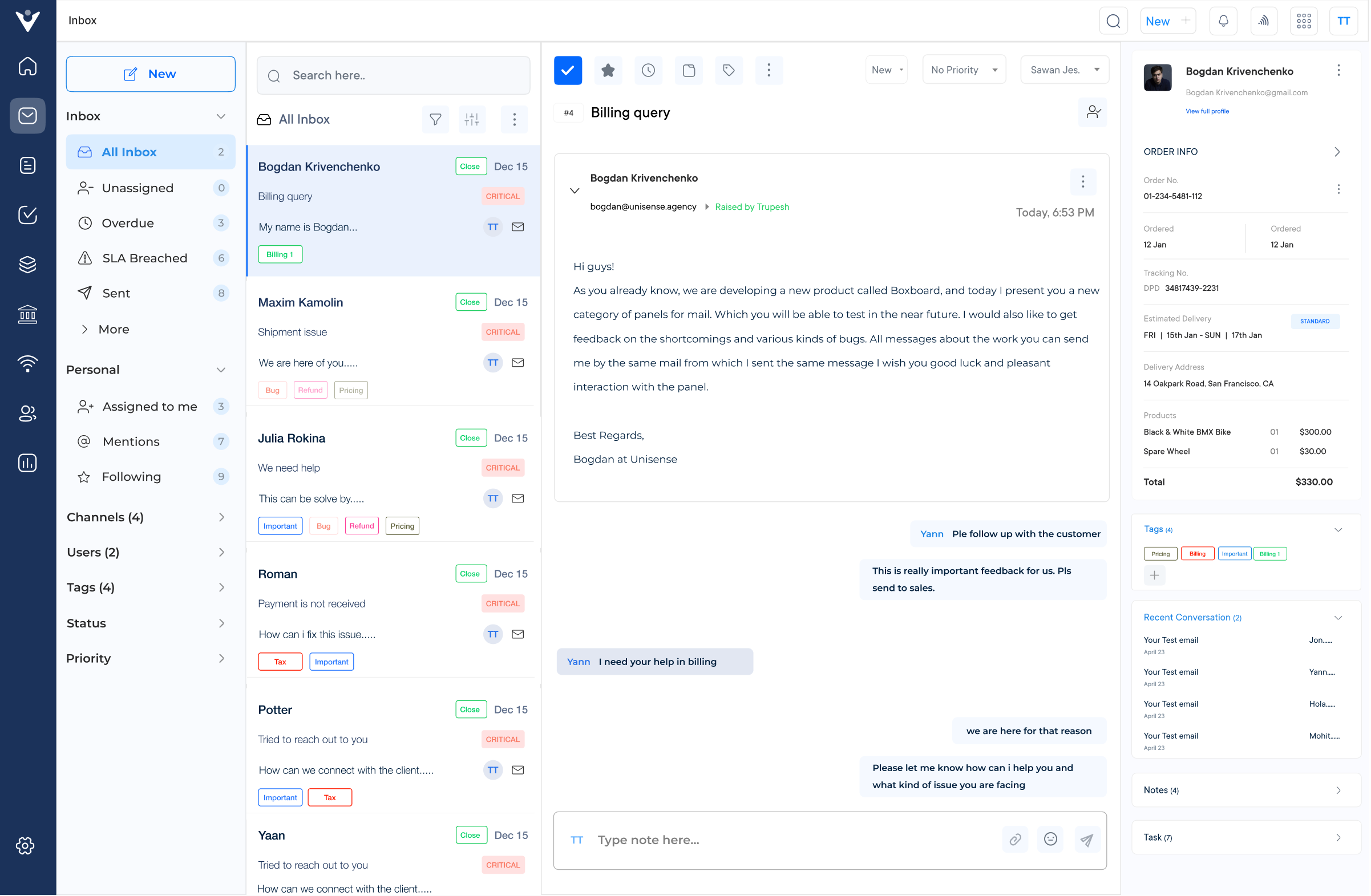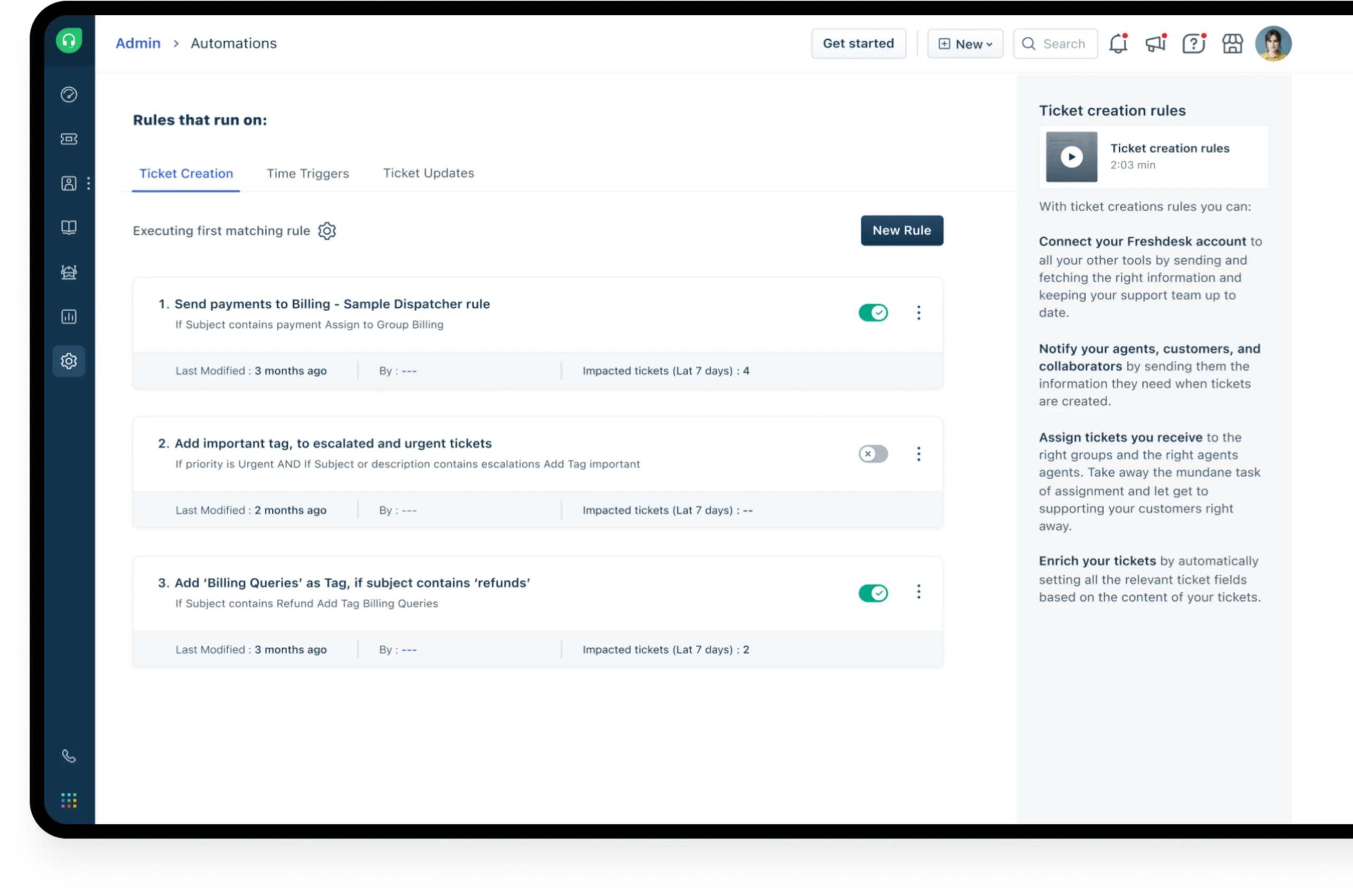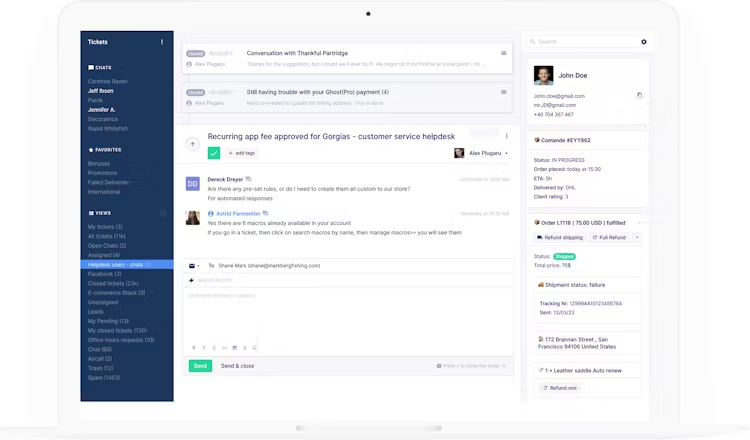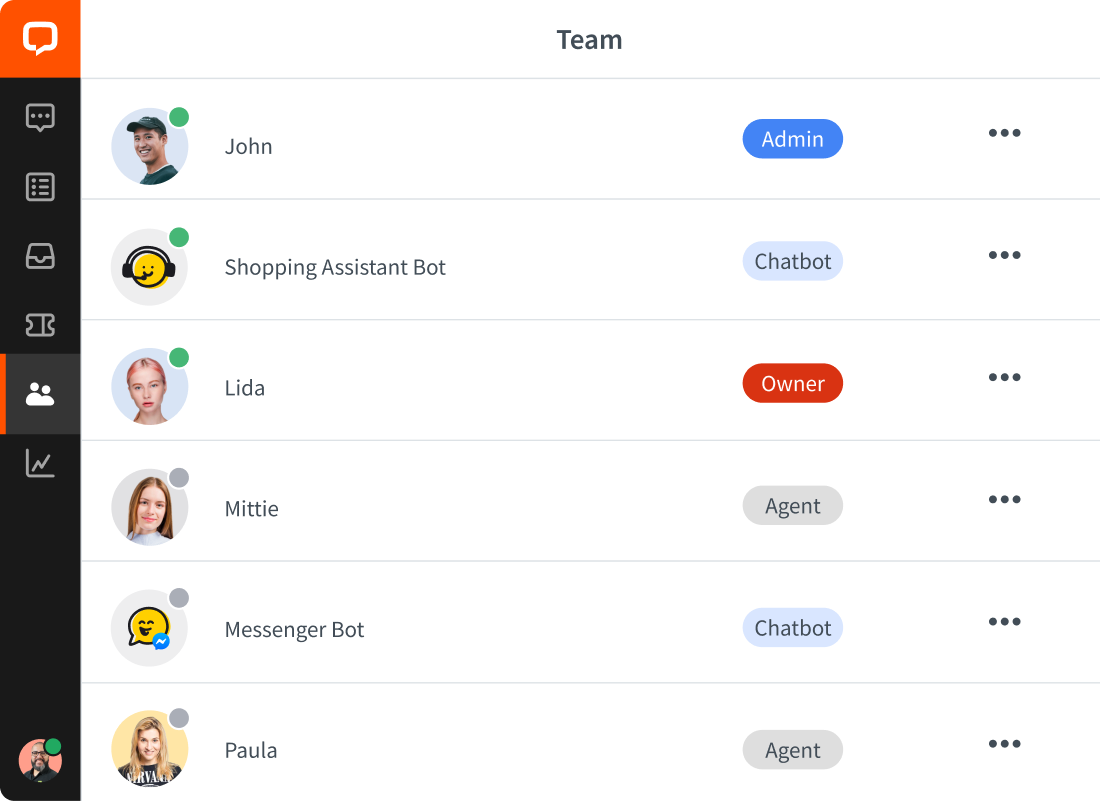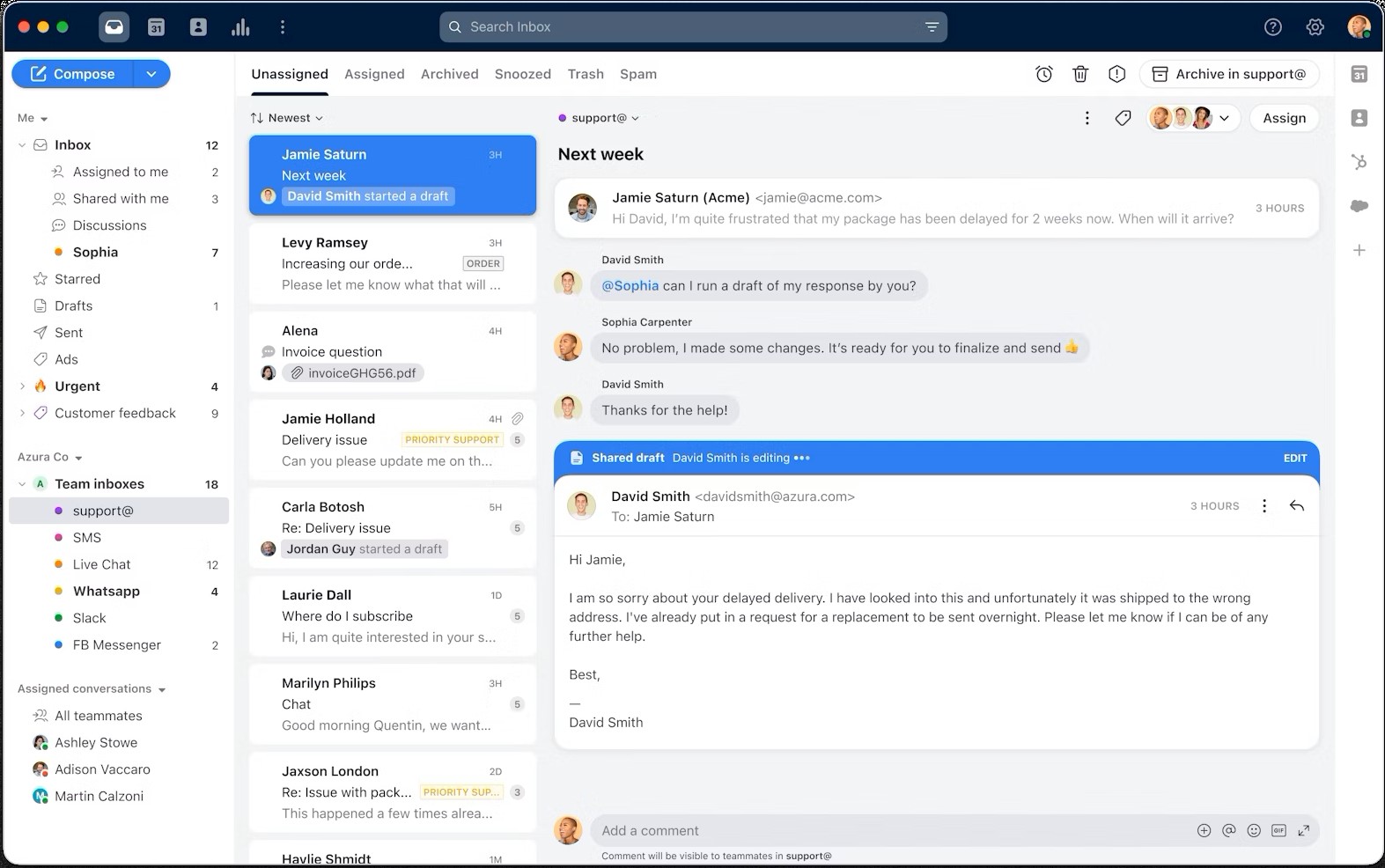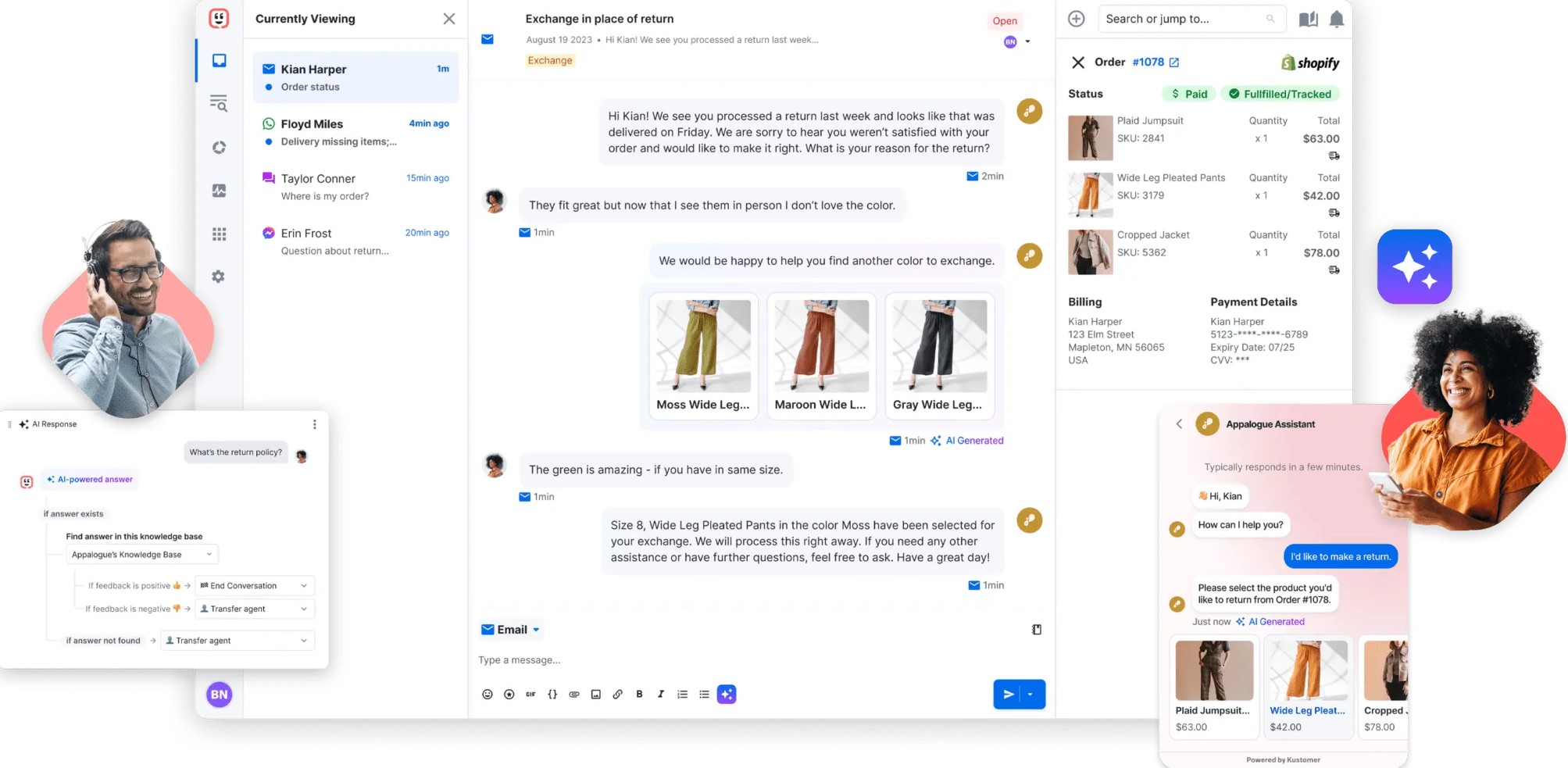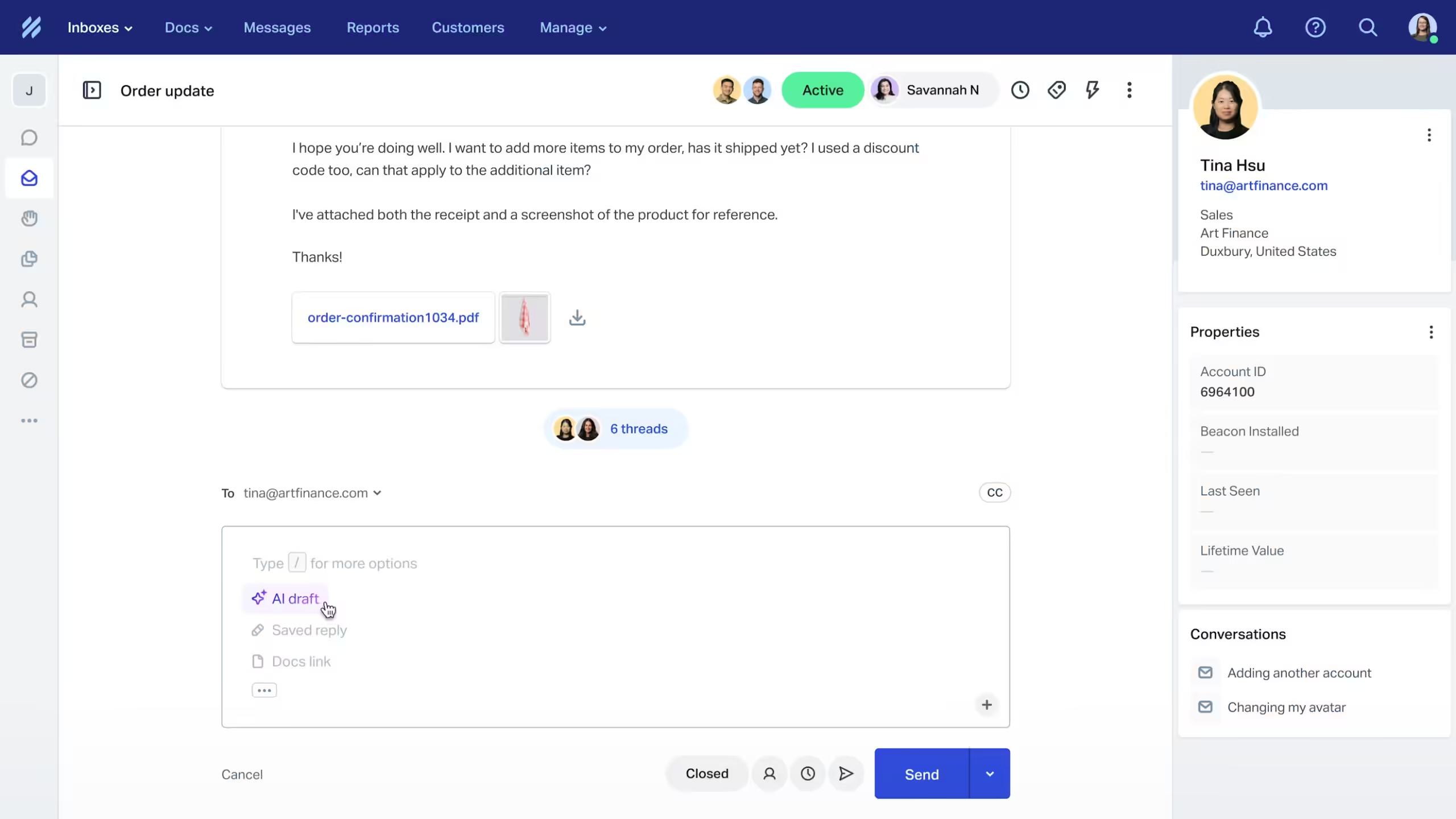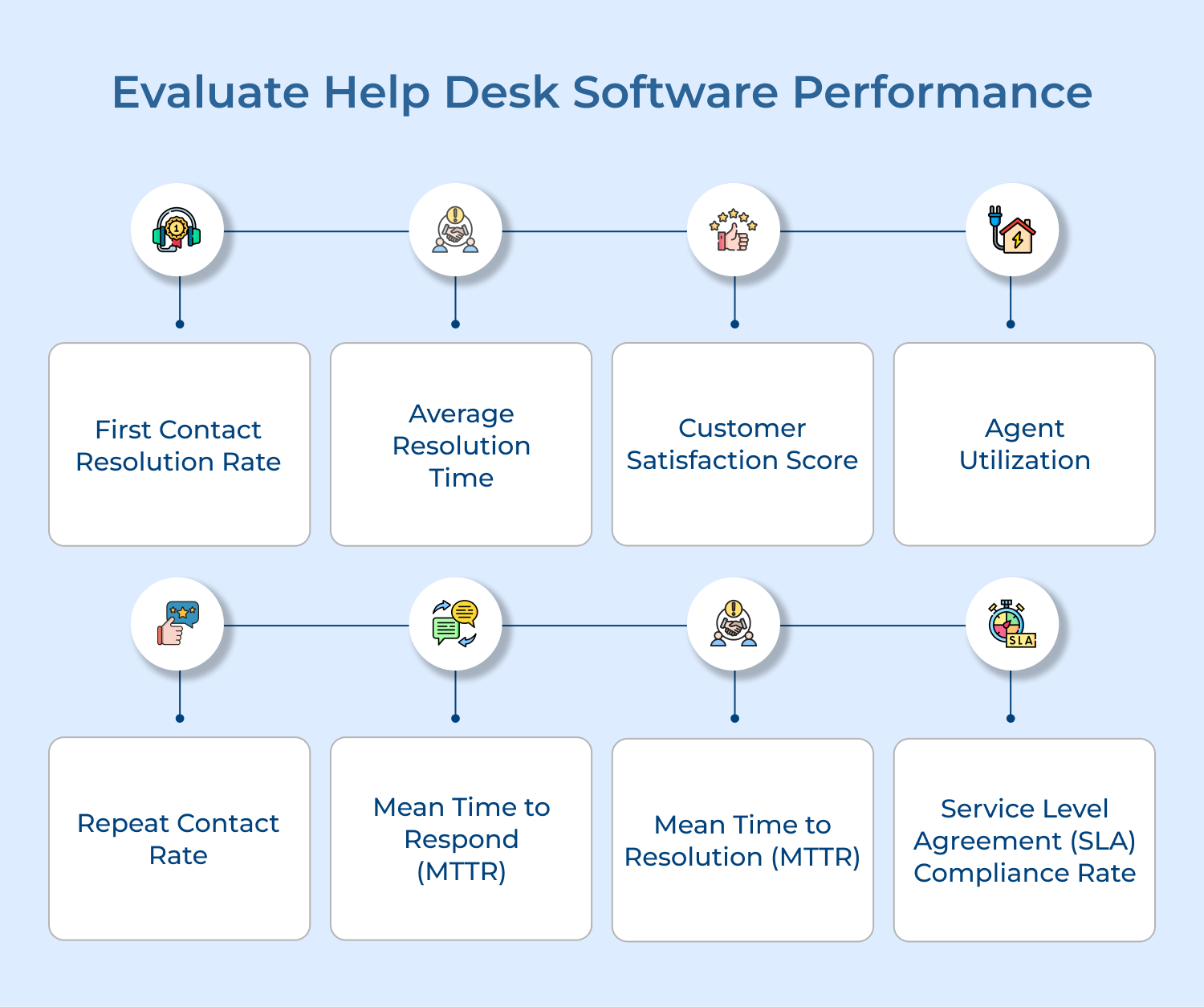1. Shared inbox for Omnichannel Support
Primarily, an IT Service Desk collects inquiries from various channels, such as email, phone, chat, social media, etc and handles support tickets. A service desk agent then manages all these incoming messages.
Though the shared inbox feature ensures consistent communication from all the integrated channels, it also creates a seamless experience for the users. Hence, a higher customer satisfaction becomes the new norm for the companies implementing this strategy.
2. Knowledge Base
A well-maintained knowledge base translates to volume reduction of repetitive tasks and simple service desk inquiries. It serves as a centralized repository of information, including FAQs, troubleshooting guides, and self-help resources.
Employees and customers alike access the knowledge base to find answers to their questions. Although the customers are more benefited by this as they resolve the issues on their own before reaching out to the service desk. Thus, promoting self-service and independence.
3. Asset Management
Asset management is critical for tracking and managing all IT assets within an organization. It allows the service desk to keep track of hardware, software, licenses, along with all kinds of configurations.
Management provides insights into asset lifecycles, enables proactive maintenance as well as upgrades. It ensures compliance with licensing and security requirements.
4. Client Portal
A client portal serves as a self-service portal for employees as well as customers, providing them with a convenient way to submit and track their IT requests. Here the users can create, view, edit as well as update their tickets.
Portal provides access to knowledge base articles and communicates directly with service desk agents. While enhancing transparency, it also improves communication and empowers users to be more involved in the resolution process.
5. Team Reporting and Customer Analytics
The only way an enterprise IT service desk can optimize its performance is when it gets the right feedback. This is usually through effective reporting and analytics. Team reporting provides insights into metrics such as ticket volume, response times, resolution rates and customer satisfaction.
Customer analytics help identify trends, patterns and areas for improvement. Hence, enabling service desk managers to make data-driven decisions, implement process improvements, all while ensuring continuous service improvement.
6. Workflow Automation & Rules
Automation comes as a secondary nature when it comes to streamlining IT service desk operations. Workflow automation allows for the automatic assignment of tickets, escalation of critical issues and routing of requests to the appropriate teams or individuals.
It isn’t just time that you save with automation rules, reductions in human error also increases. All of this trickles down to efficient ticket handling.
Read more: Find out why transport and logistics enterprises are turning to advanced help desk software for seamless service.
7. SLA Management & Audit Logs
Service Level Agreements (SLAs) are essential for defining and measuring service desk performance against predefined targets. It allows the service desk to track and manage SLAs, ensuring timely resolution to agreed-upon service levels.
Audit logs provide a detailed record of all actions performed within the service desk, enabling traceability, accountability and compliance with regulatory requirements.
